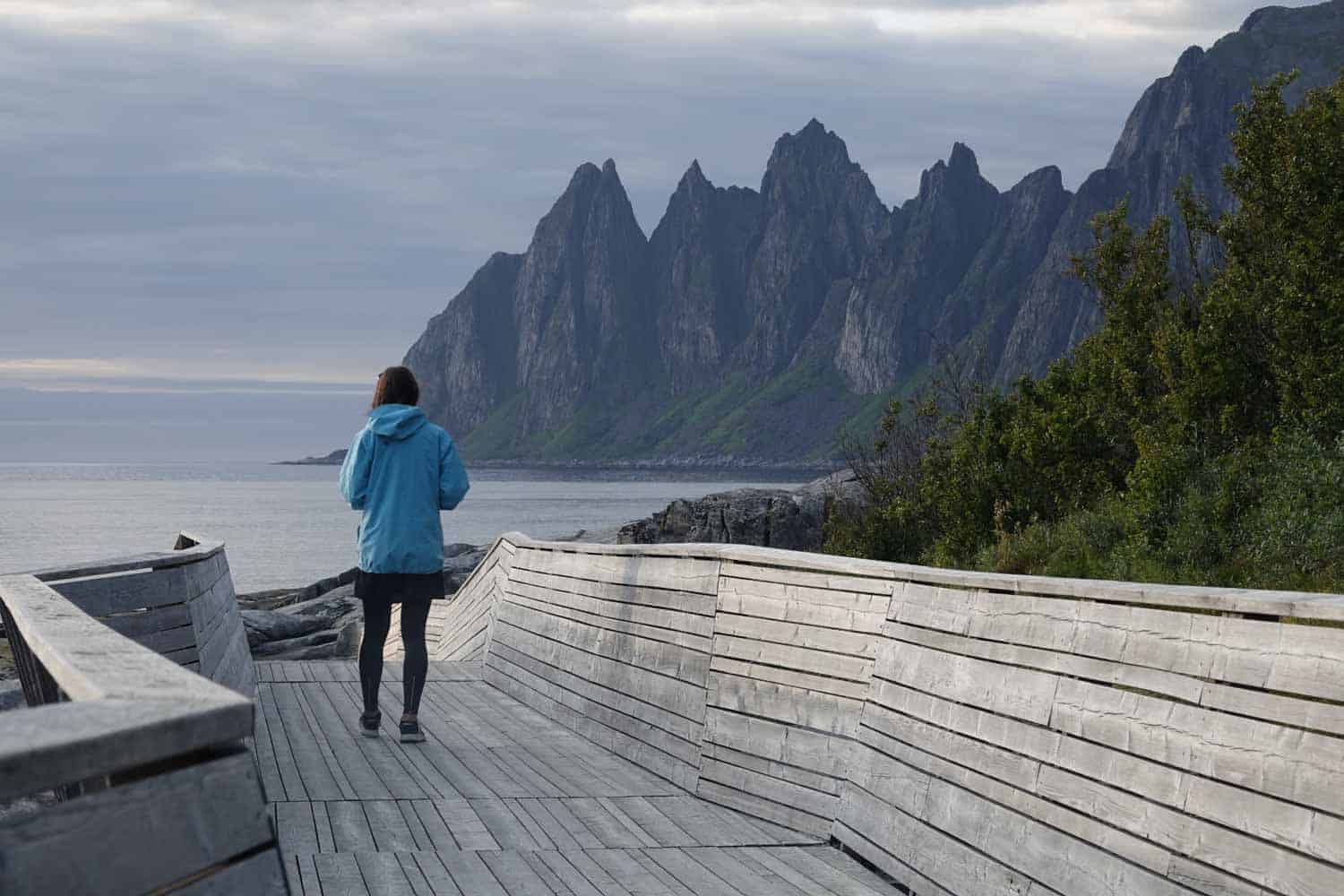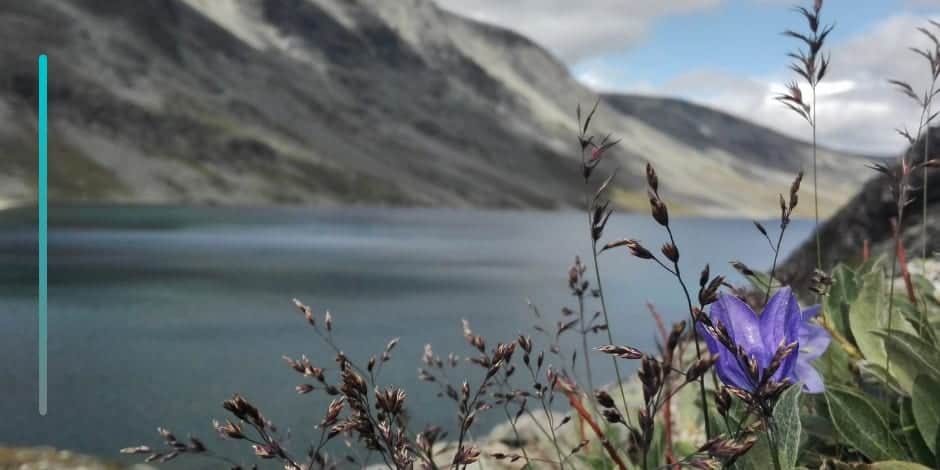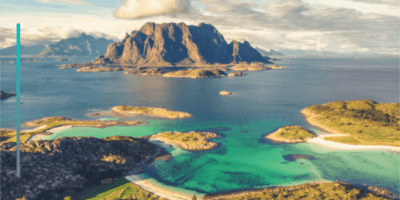Do you want to rent a campervan in Norway, but you are not sure about all you need to know about driving in Norway? There are definitely things to be aware of that might change your campervan preference. Long distances, low-speed limits and many toll roads but spectacular roads indeed.
Table of Contents
1. General information for driving in Norway
- Every valid driving license is sufficient to drive (physical form, readable in Latin letters)
- Drive on the right side
- Always have the lights on
- Easy with the brakes when driving downhill – avoid overheating of the brakes by engaging low gear
- Child safety seats must be used for children under 36 kilograms or under 135 centimetres
2. Speed limits & fines in Norway
While driving in Norway, traffic signs will usually tell you what speed limit applies on a certain road, however, here are the speed limits that apply in general.
110 km/h – motorways or dual carriageways
80 km/h – outside of in-built areas
50 km/h – in-built areas and city centres
40 km/h – residential areas
Don’t break these rules for your safety, the safety of others, and for the good of your bank account. Fines in Norway can be as high as listed below. The increase in the last four years was by more than 1/3 of the price.

3. Don't underestimate the distances
What seems to be just around the corner, isn’t always that easy to reach in reality. The roads are narrow, speed limits are low and the chances are high that you won’t drive on a motorway at all.
Moreover, everyone drives carefully and slowly. It’s not rare that big RVs block a road for a while when trying to bypass each other.
Driving in Norway is quite special. So whenever Google Maps sets 4 hours to drive 200 kilometres, count with one to one and a half hours more.
Not only because driving a campervan takes longer time than a regular car, but also because most likely you want to step out of the car and discover the area a bit.

Oh Lofoten
It’s not rare that our guests who rent a campervan for a week from Oslo plan to discover Lofoten. Please don’t do this. It doesn’t make sense from any perspective. It’s a 2000 kilometre long drive that takes 2 to 3 days one way. It’s definitely not cheaper than flying there.
✅ If you are renting a campervan from Oslo (or Sandefjord), want to discover the west fjords and drive all the way to the Lofoten too, the feasible time is 3 weeks. No exaggeration.

4. Rent the right campervan size
The size matters in Norway more than anywhere else. Okay, maybe Italy may beat us in this. The most beautiful routes in Norway aren’t built for big vehicles.
If you are not experienced in driving long vehicles, you should choose something of a compact size. Do you know why a small campervan is the best for a road trip in Norway?
On the other hand, you might prefer higher comfort standards. If opting for a bigger campervan or RV, make sure to check the driving licence requirements!
Our campervan rental focuses on the comfort of driving while admiring the nature around you. Rent a compact campervan or bigger Volkswagen California Exclusive offering more living space.
Expenses related to vehicle size
- Ferries – fares based on vehicle length
- Road Tolls – fares based on vehicle weight
- Fuel consumption – based on vehicle engine, weight, driver’s skills…
- Parking – limited by vehicle category (e.g. RVs not allowed)

If you still can’t decide what campervan size to rent in Norway, try to answer these questions:
- What are your comfort requirements?
- How many of you are coming?
- What driving licence do you hold?
- How comfortable are you driving on narrow winding roads?
- How tight is your budget?
5. Toll roads in Norway
Sooner or later you will acknowledge that Norwegian infrastructure is an impressive engineering work.
Mountains are intertwined by more than thousands of tunnels (the longest road tunnel in the world – Lærdal 24,5 km), and ferries and bridges over the fjords shorten driving time by hours. These projects weren’t achieved for free – that’s the reason why drivers have to pay the road tolls.
Unlike other countries, Norway’s toll roads aren’t only those of the highest quality, but often the lowest category roads leading to a point of interest.
The tolls are usually small (around 15 kr; 1,5€), but frequent.
To get a better idea of the road toll frequency and rates, check out the map of all the toll gates.
When renting a campervan, each one has its own Autopass device that scans the toll roads and ferry journeys. You will receive an overview of what you have used after your trip.

Ferries
When discovering any part of Norway, you will most likely need to take a ferry at some point. However, don’t worry! The procedure is easier than you imagine.
- Once you reach the ferry terminal, you will park in the line to wait for the next ferry to arrive.
- The interval depends from place to place, however, the most used ferries operate at around 30-minute intervals.
- Once it’s boarding time, you will be assisted by the crew on where to park the campervan on the ferry.
- No payment is needed as it’s automatically scanned by the Autopass device.
The ferry crossing usually costs around 100 kr (10€) for a vehicle under 6 metres. No booking is needed except for Lysefjord, Geirangerfjord, Bodø – Moskenes and similar longer routes that also cost more.

6. Watch out pedestrians!
Pedestrians automatically expect cars to stop so they can pass the road. Some don’t even look around or rush through a crosswalk on a bike – for you, the driver, very unexpectedly.
It’s a common habit to yield right of way to pedestrians. Some drivers stop even if the pedestrians are only walking by, just to be sure. So don’t be surprised when somebody walks straight under your wheels. It’s normal, just be prepared to jump on breaks and of course don’t drive fast.
7. Confusing crossroads
Maybe you are used to having traffic signs everywhere, at each crossroad. In some Norwegian cities and towns, you can be pretty confused when driving (and so are locals 😅). At one crossroad there are signs to yield the right of way, at another, there aren’t.
Therefore, you must pay attention to what’s around you. Don’t expect the road to be the main one when it looks like it. If there is no sign, the right-hand rule applies. Please, pay attention.
8. Winter driving in Norway
Driving in Norway during the winter months (October to April) requires good driving skills. The roads are covered with snow or ice, visibility is lower and snow storms aren’t unusual.
Mountain passes are closed for the whole winter period and other roads might be closed on short notice. Always check the national road’s website for conditions before driving.
Lastly, clean your windows properly, another way it may cost you 2750 NOK.
You can rent a campervan for a ski holiday. Campers are winter-ready for driving and sleeping. A weather forecast will warn you about adverse conditions and avalanche risk.
Click here for winter campervan trip inspiration

9. Norwegian Scenic Routes
We know how beautiful Norway is and we want you to know too. That’s why a map of the 18 National Scenic Routes exists.
These routes lead through an exceptional natural environment where the drive itself should be an experience. After 30 years since the beginning of this project, the routes are enhanced by architectural masterpieces.
If you don’t know where to start planning your road trip in Norway, the Scenic Routes are a great starting point.
Check out an itinerary of an autumn campervan road trip on the Hardangervidda Scenic Route.

I suppose this is all you need to know about driving a campervan in Norway. Drive safe, plan a little bit and most importantly, enjoy your holiday as much as you can. Keep an eye on our blog, travel tips and tricks.




